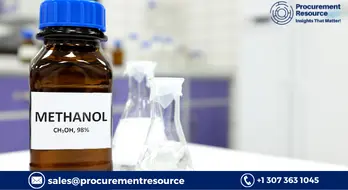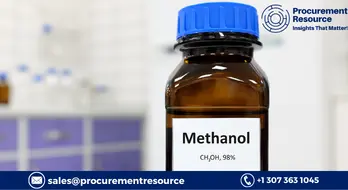Lower Realisation of Ethylene and Methanol Derivatives will Continue to Impact the Margin of SABIC During the Next Two Quarters
.webp)
Saudi Arabia’s SABIC anticipates margin pressure to persist in the first half of this year following a steep decline in net profit in 2022 due to weaker demand and lower prices.
Despite a 2% increase in volumes, the company's sales prices decreased by 18% year over year in the fourth quarter, according to presentation slides of its quarterly results on February 28.
From October to December of last year, the company's petrochemicals and specialty division experienced a 10% quarterly decline in revenue to SR 35.3 billion as average sales prices decreased by 9%.
Prices for mono ethylene glycol (MEG) fell in the fourth quarter as compared to the third quarter because of weak demand, a poor operating rate for polyester, and a large supply in China.
Due to decreased demand, methanol prices decreased in the fourth quarter compared to the third quarter. Due to seasonality, low gasoline prices, and lower demand, it was reported that MTBE prices also fell in the third quarter compared to the second quarter.
SABIC reported that prices for polyethylene (PE) fell in the fourth quarter compared to the prior quarter, mostly as a result of weak global demand and consumer destocking in Europe.
Due to higher feedstock prices as well as higher selling and distribution costs, the company's earnings before interest, tax, depreciation, and amortisation for the entire year decreased by 20% year over year to SR 38.6 billion.
Petrochemical Price Outlook in 2022
Following a 4% y-o-y dip in petrochemical prices, the Q4 prices were no different than the price graphs in the prior quarter.
In a third-quarter financial statement published on October 30 on the website of the Saudi Stock Exchange, where its shares are traded, SABIC reported that third-quarter of 2022 sales increased 11% year over year, but net profit fell 67% to Riyals 1.84 billion (USD 490 million).
Average sales prices increased by 15% over the first nine months of 2022 compared to the same period in the previous year, while sales volumes rose by 11%. In April 2022, margins are anticipated to be under pressure. For the third quarter, no quantities nor production data were provided.
Request Access For Regular Price Update of Ethylene
On November 1, Saudi Aramco, which controls 70% of SABIC, is expected to release its third-quarter results. In comparison to the same period in 2021, SABIC's petrochemicals division witnessed average sales prices grow by 12% and sales volumes rise by 9%.
Ethylene Price Trend
North America
In the US market, ethylene prices have displayed a swinging pattern in recent months. Due to the sluggish demand from the downstream polyethylene and glycol chain industries, ethylene prices have been on the decline.
Prices for feedstock naphtha have dropped, which has reduced the cost of producing ethylene in the local market. Yet, because of the high costs of the feedstock naphtha, ethylene prices rose. Prices have grown as a result of a minor rebound in downstream industry demand.
Request Access For Regular Price Update of Methanol
The labour scarcity and vessel bunching have also had an effect on the supply chain, which has reduced the amount of material that is available in the area. Even so, as we approached the seasonal lull, downstream sectors' need for ethylene declined.
Asia Pacific
Recently, ethylene prices displayed conflicting sentiments in the Chinese market. Due to an abundant supply and inadequate demand, ethylene prices were on the decline. Also, production, operation, and logistics are unpredictable as a result of the ongoing lockdown procedures in major cities in response to an increase in pandemic cases.
The end-user demand was put under downward pressure as a result. Generally, consumption from competitive businesses like the glycol chain, downstream polyethylene, and others has remained on the low side. Meanwhile, the product is now more widely available thanks to inexpensive imports from South Korea and Japan.
Butadiene prices did increase again as a result of a supply shortage, broken supply chains, and increased demand. The price increase in the Chinese market was mostly caused by overall tighter supplies and low inventory.
Europe
In recent months, a mixed trend was observed in ethylene prices in the European market. Due to the weak cost pressure from the feedstock Naphtha prices, ethylene prices fell dramatically by 8.8% in October.
In addition, the downstream Polyethylene and Glycol value chain's demand has fallen under Europe's high inflation rate. Eurostat data show that in September 2022 compared to the prior month, the European inflation rate rose from 9.1% to 10%.
Ethylene prices did, however, increase again in December. Due to high energy and operating costs, domestic production costs have continued to rise, which has led to low output rates. Also, the price increase is a result of the increasing cost of naphtha, the basic material.
In spite of this, downstream industry demand has remained on the poor side. Additionally, LyondellBasell, the world's largest producer of ethylene, has announced that the Ethylene cracker at its integrated olefins and polyolefins production facility in Berre, France, won't start up again until early 2023 because of the area's persistent high energy costs, shrinking profit margins, and declining ethylene demand.
However, because of the weak end-user sector demand in November, ethylene prices started to decline once more. Cheap imports from the Asian market have helped to support the supply, which has improved product availability in the local market. While energy prices in the area have remained consistent, domestic production costs have similarly leveled off.
Methanol Price Trend
North America
Recently, due to weak market fundamentals and little demand in the region, methanol prices in North America fell in the months that followed. The prices of methanol decreased due to unfavourable market fundamentals, falling feedstock Natural Gas prices, and increasing gas storage volume among the production units.
Due to increasing Methanol stockpiles among businesses, purchasers began acquiring the substance only when absolutely necessary. The market for methanol and its derivatives is made easier by the slow energy and naphtha values. Due to decreasing demand for additional stocks, methanol exports from the United States to South Korea and the European region also decreased.
Asia Pacific
In China, the price of methanol showed an upward trend in October, followed by a downward trend in the recent two months. The market for methanol from downstream Formic Acid and Formaldehyde was stymied by weak trading attitudes in November, and Indian Methanol prices displayed feeble price trends, adequate product availability, and weak benchmark futures plummeted the price trend.
As a result of impending methanol cargoes from Iran and Venezuela in the upcoming weeks, producers have to lower their prices to prevent increasing stocks.
Europe
In Germany, the cost of methanol stayed below average in recent months. Methanol producers continued to deal with comparatively high inventory levels as they did so. German methanol prices fell as a result of a strong market and an abundance of product availability.
Read More About Ethylene and Methanol Production Cost Reports - REQUEST FREE SAMPLE COPY IN PDF
Saudi Arabia still finds it difficult to export methanol to China due to adequate product supplies among ports and downstream businesses. Potential recessionary effects in an environment of high energy prices continue to be the primary driver of price declines.
Regarding the feedstock market, low benchmark futures prices for natural gas also contributed to a downward tendency in prices.
As per Procurement Resource, after a sharp decrease in net profit in 2022 due to weaker demand and lower pricing, Saudi Arabia's SABIC predicts margin pressure to continue in the first half of this year. Despite a 2% increase in volumes, sales prices declined by 18% year over year in the fourth quarter. The company's petrochemicals and specialty segment saw revenue fall by 10% in a quarter from October to December of last year, to SR 35.3 billion, as average sales prices fell by 9%.
Due to low demand, a subpar operating rate for polyester, and a significant supply in China, prices for mono ethylene glycol (MEG) decreased in the fourth quarter compared to the third quarter. Prices for methanol dropped in the fourth quarter compared to the third quarter as a result of a decline in demand. It was noted that MTBE costs also decreased in the third quarter compared to the second quarter, likely as a result of seasonality, low gasoline prices, and lower demand.




.webp)